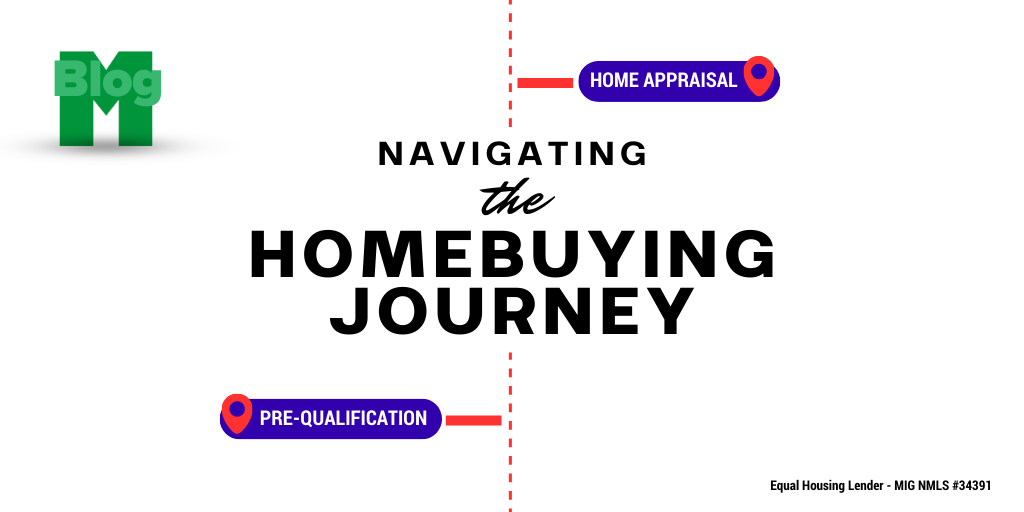
Buying a home is an exciting process, but it has many moving parts that can make it seem overwhelming. Here’s a step-by-step guide on the homebuying journey, what to expect, and tips to make it easier on yourself.
#1 Evaluate your Finances
Your finances are the number one factor when buying a house. You must know what you can afford for a down payment, the ongoing mortgage payment, and the other responsibilities that owning a home creates. Don’t forget costs such as property taxes, home insurance, utilities, home repairs, and furnishing.
Don’t make yourself house-poor. Consider your other debts, current and future income, and any life changes you anticipate in the coming years, such as having children and cutting down to one income or any anticipated career changes.
#2 Determine your Needs vs. Wants
Buying a house is exciting, but your emotions can cause you to make spontaneous decisions that could negatively affect your finances.
Make a list of what your house needs, such as the number of bedrooms to fit your family size, crucial amenities, commuting distance, and ample space for standard living.
Next, list ‘wants’ or features that would be nice but aren’t deal-breakers. This ensures you stick within your budget and are realistic about what you can and cannot afford.
#3 Get Pre-qualified
Getting pre-qualified is not a formal approval. However, it helps you understand what mortgage lenders offer based on your current situation. It’s an estimate of what they might approve you for based on verbal confirmation of your credit score, income, assets, and liabilities.
At this point, lenders don’t ask for concrete proof of your financial situation. It’s a verbal conversation about your financial life to give your loan officer an idea of what you can afford. The lender can estimate how much loan they might approve you for and on what terms, assuming you can prove the details you provided with paystubs, W-2s, bank statements, and your credit report.
This is a great first step as you navigate the homebuying journey. You’ll have a good idea of the price range you must stay within when beginning to look at homes.
#4 Do your Research
Once you know how much a lender might qualify you for, you can begin researching areas that would fit your budget based on your down payment and eligibility for a loan.
This is a crucial step because buying a home isn’t just a financial decision but one that affects your family’s future. Think about what you need and want in an area, such as good schools, short commutes, and specific amenities like grocery stores, churches, recreational activities, or anything else your family needs.
At this point, working with a real estate agent is great, especially when you have a list of what you want in an area and a house. A real estate agent familiar with the area can help you narrow your options and eliminate the overwhelming feeling of researching areas and determining whether they fit your family well.
#5 Set a Timeline
Your prequalification isn’t a formal approval, but most lenders make them good for 90 days. If you haven’t moved on to the next step, you may need to get pre-qualified again with updated information in case anything changes with your income, debts, or credit score.
If you’re ready to move on to the next step and look at homes, having a timeline is a good idea. Pre-approvals, which are the next step with your lender, are usually good for 90 days, too. Within those 90 days, you should be able to find a house and close a deal. If not, you’ll need to go through the process again.
Setting a timeline helps you determine when to move forward with your chosen lender and get a formal pre-approval.
#6 Get Pre-Approved
When you’re ready to look at homes, it’s time to solidify your approval. The pre-qualification was the first step. Next, you want a formal pre-approval letter. This means you provided the lender with the necessary documentation to underwrite your loan, including:
- Paystubs
- W-2s or tax returns
- Asset statements
- Current liability statements
#7 Start House Hunting
Once pre-approved, it’s finally time in the homebuying journey to house hunt! Your lender will issue a pre-approval letter. This is important as many sellers want to see that you’re a serious and eligible buyer.
A pre-approval letter is especially critical during a seller’s market. In this type of market, there are more buyers than homes for sale, allowing sellers to be picky about which offers they accept. Most sellers stick with pre-approved buyers to ensure there aren’t financing issues throughout the process.
Work with your real estate agent to find homes that interest you, visit them, and make decisions with your family about which is right for you. Don’t rush the process while you’re under a 90-day pre-approval letter. If you can’t find a house within that time, you can update your information and get your pre-approval extended.
#8 Make an Offer
When you find the right house, it’s time to make an offer! This may take a few steps, depending on the situation. Some sellers accept offers as-is, and others either decline them or make a counteroffer.
Your real estate agent can help you through this step, sticking within your budget and listening to your desires for negotiations. Once both sides agree, you sign the contract and are ready to finish the homebuying journey.
#9 Home Inspection, Appraisal, and Title
After signing the sales contract, you’ll submit it to your lender, who will order a home appraisal. You also have the option to order a home inspection (lenders don’t require it). If your sales contract included a home inspection contingency, you can back out of the contract if the home inspector finds many things wrong with the home.
The lender uses the appraisal and title to ensure the property meets the loan guidelines. The appraisal determines the home’s value to ensure it’s worth at least as much as you’re paying, and the title ensures there aren’t any liens on the property and that the seller has the legal right to sell the home.
#10 Finalize Financing
If you move forward, the lender will clear conditions on your financing approval as you provide the necessary documentation. Communicate with your loan officer frequently, and ensure you provide the necessary documentation quickly to avoid delays.
It’s important during this time to not make any large purchases, change jobs, or do anything that could damage your credit score. Lenders pull your credit again before you close, and they also re-verify your employment, so ensure nothing changes so you don’t lose your approval.
#11 Close the Sale
Once the lender finalizes your financing, you can close the sale! This is the most exciting part of the homebuying journey. You’ll attend a real estate closing at the title company, where you will sign the mortgage note and deed, along with many other real estate documents.
This is when you’ll pay the down payment you promised and any closing costs you’re responsible for paying. The seller will receive the funds they are entitled to, and the closing agent will also pay any other interested parties at the closing.
When the loan closing is complete, you will receive the keys to your new home!
#12 Move In and Enjoy!
After the closing, you take possession of the home and are free to move in and make it your own! This is when the fun begins, but don’t forget about the financial responsibility it entails, including the moving costs, furnishing and setting up your home, and then the ongoing costs of homeownership.
Final Thoughts
The homebuying journey can take several months or longer, depending on when and how you start. The key is having the right team to help, including a real estate agent, mortgage lender, and real estate attorney.
With the right steps and strategic planning, you can purchase a home within your budget and enjoy the process of homeownership!



